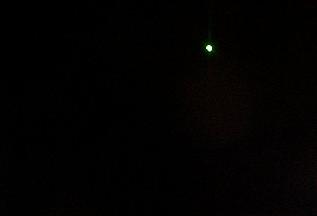Skip Navigation Links
|
A Solar Eclipse Expedition:
An Event for Girl Scouts
Continued (Page 2)
|

|

|
|
Two terrific drivers and two white vans handled
our transportation while we were in Lusaka, Zambia. It is
hard to believe that around 29 people were able to fit into
two vans! They were equipped with jump seats. Pretty cool.
|

|
The group from Williams College set up their equipment both at the CYP and at the Hotel Intercontinental.
This shot is of the Williams' set-up at the Hotel. Do you think we had enough equipment?
|
To see other (better!) images of the eclipse, look at these pages:
From Chisamba, Zambia
Elizabeth's -- from Lusaka, Zambia
To see images of the 1999 eclipse and a comparison of 1999 and 2001
coronae, see Solar Eclipse Photos from
August 11, 1999.
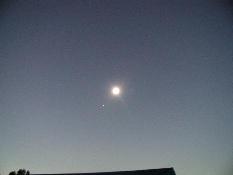
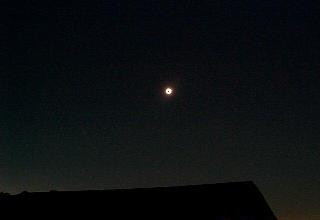
Here are digital images of totality itself. On the left, you
are seeing over-exposed corona during totality, the
bright disk of the Sun has been blocked by the Moon
(this picture just doesn't show it very well).
Look at the bigger image (click on the one to the
left) and note the "dot" below the Sun on the left
(at about 8:00 o'clock), that's Jupiter! Click on
an image for a larger version.

|
|
Here's what the temperature did during and a
few hours after the eclipse. Temps are given in
Fahrenheit, times are Central Daylight Time. Totality
occurred from 8:09 CDT to 8:12 CDT. Note that the
minimum temperature occurred after that.
What do you think might be causing the second drop
in temperature (at about 10:00 CDT)? (Find the answer at the
bottom of the page.)
|

|
|
A couple of days after the eclipse we went to
Botswana to visit Chobe National Park. It is a super game
reserve. This young elephant actually challenged our truck.
He got right up next to us, trumpeted, and spread out his
ears. Isn't he beautiful??
|

|
|
Mitzi's favorite type of wild animal is seen
here. These two lions were not at all interested in
us; they were keenly watching some guinea hens down
the road. If we hadn't been there, I'm
sure they would have successfully caught a bit of an
appetizer!
|

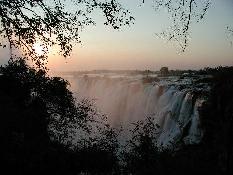
|
|
We also visited Victoria Falls. Here is Elizabeth's
favorite digital picture on the left. Mitzi's is on
the right.
|
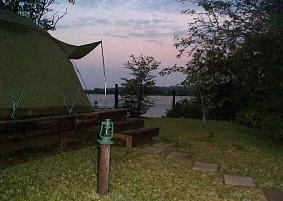
|
|
While visiting Victoria Falls and Chobe, we camped on the
Zambezi River in a tent similar to this one. Can you
imagine waking in the morning and listening to hippo sounds
while snuggled in your covers?
|
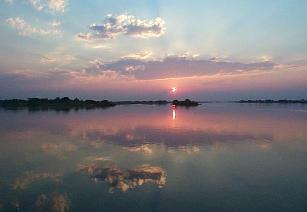
|
|
As we prepared to cross the Zambezi River by ferry
on our way from Botswana back to Zambia to prepare for our
trip home, we saw this lovely sunset. Kind of a fitting end
to our solar adventure, huh?
|
Answer to Temperature Question:
The second
drop in temperature at about 10:00 a.m. CDT (5:00 p.m. in
Lusaka, Zambia) happened because the Sun was setting
(sunset was at about 6 p.m.).
|












